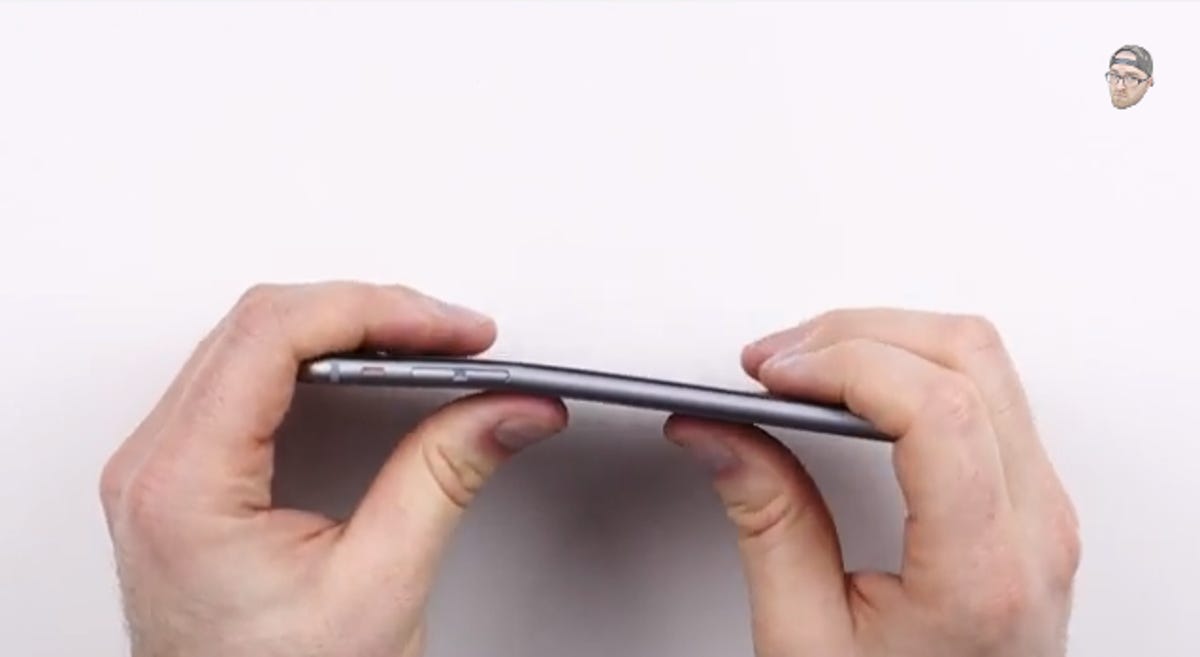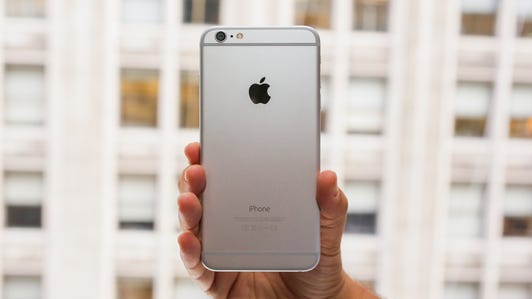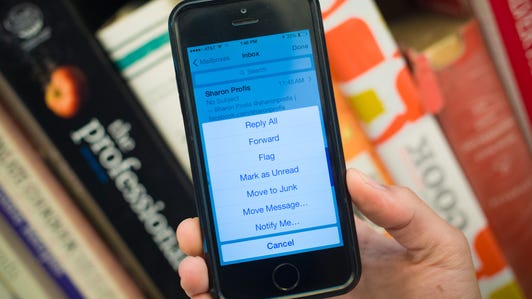
Unbox Therapy/YouTube screenshot by Chris Matyszczyk/CNET
Don’t blow “Bendgate” out of proportion, Apple has warned.
Reports have rolled in since Apple released its newest iPhones, the 4.7-inch 6 and the 5.5-inch 6 Plus, that the bigger device is more flexible than it should be. Photos and videos showing users with bent iPhone 6 Plus devices have gone viral, and worries about design flaws in the Apple’s flagship device (as well as software glitches) have hurt Apple’s stock.
Apple on Thursday said a bend in the iPhone is “extremely rare,” and through the first six days of sale, only nine customers contacted Apple with a bent iPhone 6 Plus. It also said it performed “rigorous” testing throughout the entire development process to ensure the devices were up to Apple’s high standards.
Here’s Apple’s full statement:
Our iPhones are designed, engineered and manufactured to be both beautiful and sturdy. iPhone 6 and iPhone 6 Plus feature a precision engineered unibody enclosure constructed from machining a custom grade of 6000 series anodized aluminum, which is tempered for extra strength. They also feature stainless steel and titanium inserts to reinforce high stress locations and use the strongest glass in the smartphone industry. We chose these high-quality materials and construction very carefully for their strength and durability. We also perform rigorous tests throughout the entire development cycle including 3-point bending, pressure point cycling, sit, torsion, and user studies. iPhone 6 and iPhone 6 Plus meet or exceed all of our high quality standards to endure everyday, real life use. With normal use a bend in iPhone is extremely rare and through our first six days of sale, a total of nine customers have contacted Apple with a bent iPhone 6 Plus. As with any Apple product, if you have questions please contact Apple.
Apple’s week has quickly gone from triumphant to troubling. The company on Monday touted that it sold 10 million iPhone 6 and 6 Plus devices in the first weekend they were available. But reports quickly rolled in about bugs in the iOS 8 operating system and problems with the iPhone 6 Plus design.
The issues come as CEO Tim Cook seeks to put to rest critics who have worried Apple couldn’t keep up the pace of innovation from Steve Jobs’ time at the helm. They’re also troubling for Apple as it tries to sell more models of the iPhone — its biggest moneymaker, accounting for more than half of sales — than ever before.
Cook earlier this month showed off Apple’s first new device under his leadership, the Apple Watch, and also broke from Apple’s previous trend of only offering smaller display smartphones. Introducing larger screens with the iPhone 6 and iPhone 6 Plus will help it please current customers and possibly tempt some buyers away from its competitors.
The iPhone 6 Plus is a gorgeous, massive smartphone (pictures)






Apple’s shares recently dropped 3.4 percent to $98.26. The stock reached an all-time high (when adjusted for the recent 7-for-1 stock split) of $103.74 on September 2, a week before Apple unveiled its newest iPhones and Apple Watch.
This year’s iPhone 6 and iPhone 6 Plus are most notable for their scaled-up screen sizes of 4.7 inches and 5.5 inches, respectively, giving Apple fans the option of larger handsets already commonplace among phones running Google’s Android operating system. The devices went on sale Friday in 10 countries, starting at $199 for the iPhone 6 with 16GB of storage space and going up to $499 for the 6 Plus with 128GB of memory. The smartphones will go on sale in 20 more countries starting September 26.
The iPhone 6 has the potential to be the biggest launch in Apple’s 38-year history, with the latest design providing two larger-screen models, slimmer and lighter bodies, and a new mobile-payment system. Apple reportedly has asked manufacturing partners to produce about 70 million to 80 million units of its larger-screen iPhones by December 30, which is about 30 percent to 40 percent more iPhones than it ordered for its initial run of last year’s iPhone 5S and 5C. Demand for the new smartphones has outpaced initial supplies, Apple has said.
See also
- Misfire! Apple yanks botched iOS 8.0.1 update
- Four of Apple’s biggest missteps, from Maps to MobileMe
- Apple sells 10M iPhone 6 and 6 Plus devices in first weekend
- With its debut smartwatch, Apple aims to make wearables fashionable
- CNET’s take on iOS 8
And as of September 21, 46 percent of Apple’s mobile devices on the market were running iOS 8. But it didn’t take long for some iOS users to start reporting problems. Conversations on Apple’s support forums and other online sources have pointed to Wi-Fi connectivity glitches, the usual battery drain issue and slow performance in Safari, among other problems. A bug in the operating system also prevented developers from launching HealthKit apps in the App Store.
The iOS 8.0.1 update, released Wednesday and then swiftly recalled, aimed to fix issues that have plagued Apple’s mobile OS since it arrived last week. But many users immediately reported problems after downloading the update, including their iPhones no longer connecting to a cellular network. iPhone owners also reported issues with Touch ID after downloading the update, with some noting that the feature — which allows people to unlock their phones using their fingerprints — was no longer working.
Apple ended up pulling iOS 8.0.1 about an hour after it first became available. The company on Thursday published instructions for users who downloaded iOS 8.0.1 before Apple scrapped the update. The steps help users downgrade their devices to iOS 8 as Apple works on a fix for the software.
Here’s Apple’s statement about iOS 8.0.1:
We have a work around for iPhone 6 and iPhone 6 Plus users who lost cellular service and Touch ID functionality today after updating to iOS 8.0.1. Affected users can reinstall iOS 8 through iTunes, for more information visit http://support.apple.com/kb/HT6487. We apologize for the great inconvenience experienced by users, and are working around the clock to prepare iOS 8.0.2 with a fix for the issue, and will release it as soon as it is ready in the next few days.
iOS 8 marks the second major release of Apple’s mobile operating system under the guidance of head designer Jony Ive and new software head Craig Federighi. Cook fired the prior iOS chief, Scott Forstall, in October 2012 in part for refusing to take responsibility for Apple’s Maps fiasco. Ive spearheaded a complete redesign of iOS 7, the first major overhaul since Apple introduced the software with the first iPhone in 2007.
iOS 8 takes Ive’s design efforts a step further, but it focuses more on functionality than visuals. With iOS 8, Apple is bringing a laundry list of features that many fans have desired for years. Most importantly, the new software tackles long-standing issues with iOS’ notification system, its tie-ins with Apple’s desktop OS X software and device- and file-management software iCloud, and its native SMS client Messages. It extends Apple’s reach into the health and home automation space, too, with a suite of new “Kit” apps and developer tools.
Updated at 12:45 p.m. PT: Adds background information.
30 tips every new iOS 8 user should know









